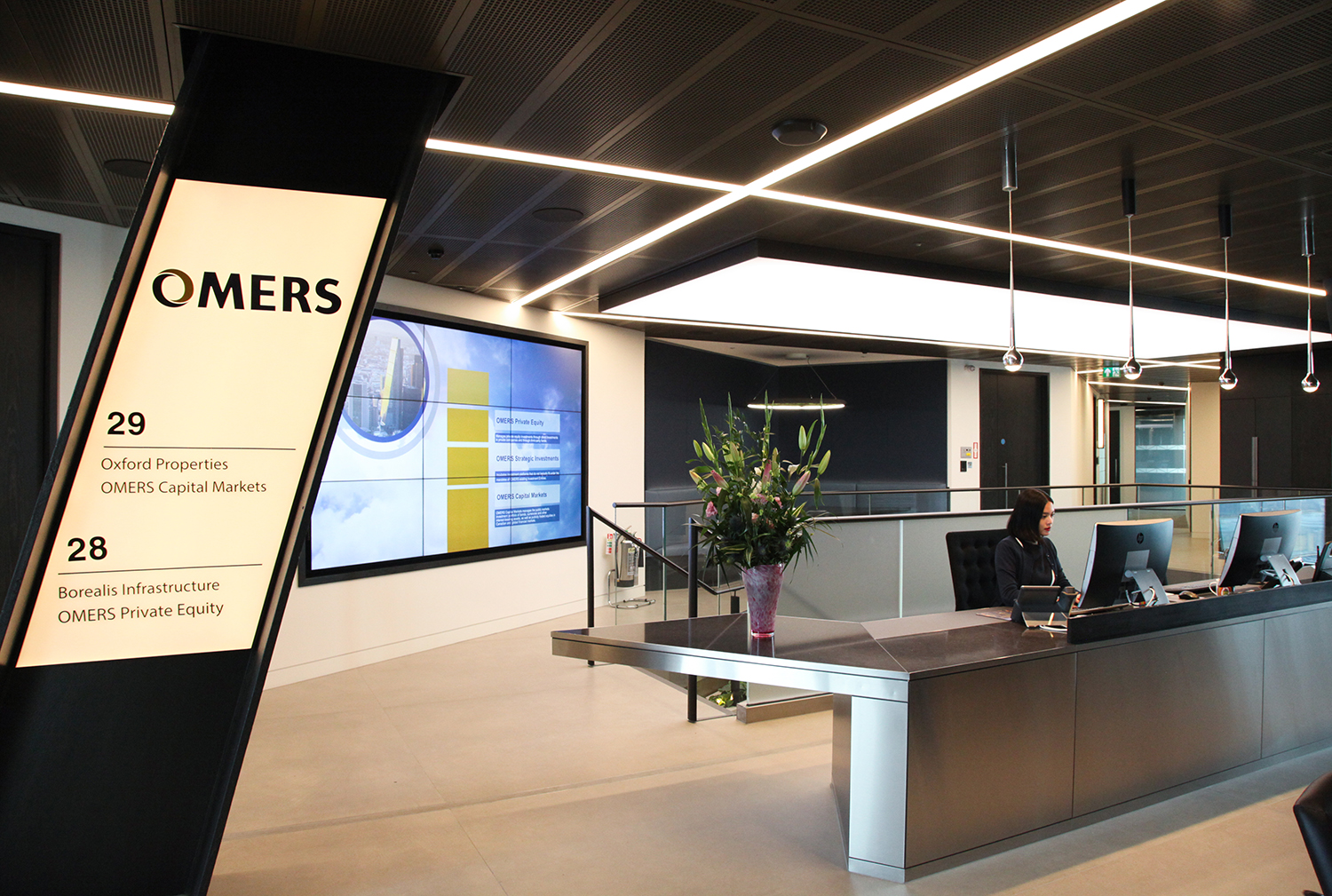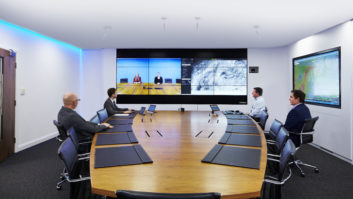
The corporate AV market is an exiting opportunity for integrators – but it can be a challenging one in which to be profitable. Ian McMurray offers some pointers.
Sometimes, it’s easier to define what things are by what they’re not. That seems to apply with so-called ‘corporate AV’. It’s not digital signage. It’s not control centres. It’s not simulation. It’s not education. It’s not retail or hospitality or healthcare or visitor attractions or entertainment. It’s pretty much whatever’s left – but whatever’s left is a big space.
As such, corporate AV has historically proved an attractive market for AV integrators – and, according to a recent InfoComm study, it represents nearly one-third of the overall market and has seen a CAGR of 13% over the past couple of years.
“The corporate AV market is one of the industry’s biggest drivers,” says David Labuskes, executive director and CEO, InfoComm International. “The majority of integrators across the world identify corporate customers as an engine for growth. Unlike some other market segments, such as education and government, corporate customers are usually leaders in the adoption of technology – in this case AV technology – as a way to improve operations and business outcomes.”
That growth is also seen by large screen displays market researcher PMA Research. “We believe the corporate market for large flatpanel displays looks very healthy,” reveals the company’s vice president, Linda Norton. “Our recent PMA Research survey of US pro-AV dealers found that they expect their large format flatpanel sales to grow by 23% this year, and by 25% in 2017.”
Competitive market
Being attractive, however, makes it competitive – and competitive markets are notoriously hard to make money in. That’s a challenge compounded by Labuskes’ point about leading the adoption of technology.
“It’s incredibly important to keep up to date with a whole range of AV products and be aware of new ones as they come on to the market,” notes Toni Barnett, managing director of integrator CDEC. “That’s a challenge as AV technology is changing constantly and the corporate sector demands innovation.”
The situation is, perhaps, exacerbated by the fact that corporate users have been in the vanguard of the so-called ‘IT-ification’ of AV applications.
“The corporate space is highly competitive and needs integrators to be more IT-savvy than ever before,” notes Bryan Edwards, head of technical sales at integrator Reflex. “Technical teams must have a good knowledge of data network topologies and software applications, which can be running complex IP-connected devices. The integrator’s IT knowledge has to extend to collaborative platforms. If you want to compete in this market, a high level of technical expertise is essential.
“Ownership of AV projects has changed,” adds Paul Childerhouse, managing director of integrator Pioneer Digital. “We are increasingly working with IT teams and within big corporate organisations and the intensely high levels of security can present challenges with remote access during the average working day.”
Complexity
Terry Wilson, commercial director at integrator AVMI, sees even greater complexity. “We now see three distinct stakeholder groups,” he says. “Facilities management will own and manage the environment within which the AV is housed; IT is responsible for the technology infrastructure to which it is connected; and the end-users in the business require the efficiency and effectiveness of their meetings and so on to be enhanced. AV integrators and service providers must ensure that their offerings address the multi-faceted requirements of these stakeholder groups.”
Oh, and from being ‘nice to have’, AV applications have become vitally important to major organisations.
“The corporate market is unquestionably growing,” believes Owen Ellis, chairman of the AV User Group – which counts 500 AV end-user professionals among its members, and which has now expanded from its original UK base to Hong Kong and New York. “AV now provides communications tools that are key to many members’ businesses. AV applications are becoming increasingly mission-critical – a situation that is reinforced by the increasing globalisation of many companies.”
No pressure on integrators there, then. Similarly, there’s no pressure on pricing. Or perhaps there is.
“One challenge when working with global corporate brands arises when they have already arranged direct manufacturer global-supported pricing,” says Jim Harwood, managing director at integrator Focus 21. “A number of the screen and videoconferencing manufacturers do this, and it makes it very difficult for the integrator to make a decent margin.”
Developing relationships
And if those weren’t enough challenges…“Integrators need to keep in mind that when a corporate customer is seeking an AV solution, that customer knows a lot more about AV solutions than he or she did 10 years ago,” points out Labuskes, “and may already be most of the way to a buying decision.”
It is, however, rare that a customer comes to a buying decision wholly uninfluenced – and Ellis is quick to identify one of the keys to securing profitable business in the corporate market.
“Account management is key,” he claims. “Integrators need to develop a relationship with end-users to develop an understanding of their business objectives and strategies. They shouldn’t just be waiting for the next bid opportunity. Regular meetings, even when there’s no apparent imminent business, are vital. Integrators can bring real value in terms of knowledge, experience, perspective – share experiences from other projects. It’s a two-way street.”
Those long-term integrator/customer relationships inevitably have a significant effect on the requests for proposals that pop out.
Ellis also has caustic views on the subject of integrators who try to ‘buy’ a contract by bidding low and hoping to make their profit on specification creep or change notices, and points out that, in terms of long-term support, it’s no less in the end-user’s interests that an integrator is profitable.
He is not alone in having views as to how integrators can develop profitable business in the corporate AV sector. Edwards picks up on the theme of the value an integrator can bring.
“Getting involved early and accurately identifying the client’s outcomes is key,” he believes. “Beyond this, we use plenty of demonstrations with pilots or proof-of-concept stages to set expectations and iron out issues early on – including technology barriers. We find this helps the client to understand the value offered by the integrator, which leads to less margin shaving on the project costs.”
Childerhouse sees things similarly. “Setting expectations right at the beginning of a project about exactly what your team will be delivering is essential,” he claims. “Otherwise, you get in a situation with the client asking ‘Can you just…?’ – and a project quickly loses its profitability.”
“It is essential that both parties understand exactly what is required and quoted for,” adds Barnett. “The key to profitable engagement is understanding each client’s individual needs and ensuring that project expectations are managed – and, ideally, exceeded.”
www.avmi.com
www.avusergroup.com
www.cdec.co.uk
www.focus21.co.uk
www.infocomm.org
www.pioneergroup.co.uk
www.pmaresearch.com







